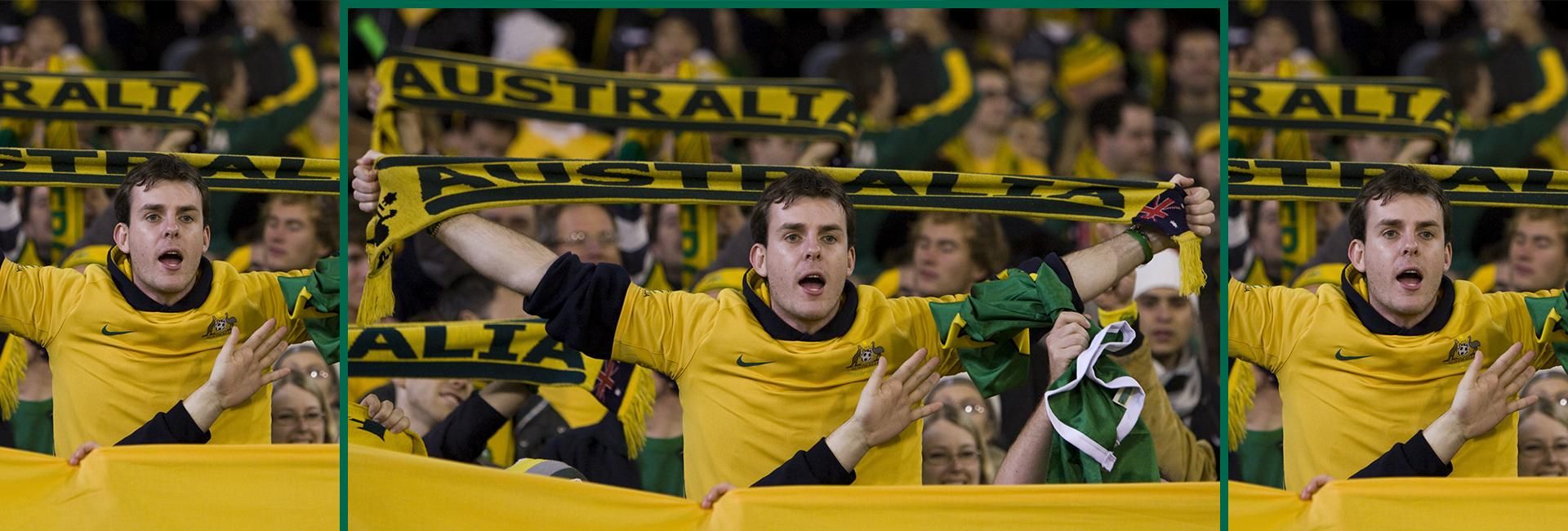The Socceroos' unlikely qualification for the 2022 World Cup is already part of Australian sporting folklore: a last-gasp victory over heavily favoured Peru thanks to penalty shootout heroics from a dancing second-string goalkeeper. That victory secured a fifth consecutive World Cup qualification but Australia will pay a price for this celebration of mediocrity.
We should celebrate while we can. I am already preparing for the quadrennial disappointment of the Socceroos not making it out of the group stage of the World Cup. Don't get me wrong, I’m as happy as any other Australian fan that the Socceroos will compete in Qatar in November, but missing the World Cup could have been the wake-up call we needed. It would have provided a chance for introspection, a reckoning of how the game in Australia has been mismanaged and how it could be developed to build towards future success.
I was five when the Socceroos defied the odds and advanced beyond the group stage of the World Cup in 2006. That year, they qualified for the World Cup for the first time in 32 years and then played competitive football against some of the world’s best teams. It took a controversial 89th minute penalty for eventual champions Italy to get past the Socceroos. A similar achievement in 2022 is nothing but a pipe dream.
Since 2006, the men’s national team has been in a state of steady decline. The team failed to advance to the knockout stages in 2010, finished with zero points in 2014 and didn’t score a single goal from open play in 2018. The Socceroos have yet again scraped into the world’s biggest sporting event, with little hope of making it out of the group stage.
Has Football Australia forgotten its vision for Australia to become a 'leading football nation' by 2035.
It would seem that Football Australia has adopted a policy of “good enough” when it comes to the World Cup. We’ve clearly reached our peak: routinely qualifying and maintaining our position as an easy group stage opponent.
Has Football Australia forgotten its lofty “XI Principles for the future of Australian football” released in 2020, which outlined the strategies and vision for Australia to become a “leading football nation” by 2035. “The Socceroos will regularly be ranked in the top 15 in the FIFA rankings, having consistently been the number 1 team in Asia,” the policy predicted.
In 2020, the Socceroos were ranked 41st in the world. Two years later, they have dropped a place to 42nd, 21 places behind Asia’s top team Iran, and a top 15 ranking seems very far away without a re-evaluation of policy from Football Australia, and a lot of luck.
One of the initiatives Football Australia identified to build competitiveness in Australian football was the development of a national second division league as well as a revitalised A League to foster the growth of young players. Those plans have not tangibly progressed. The A League has stagnated and active support has dwindled, with Australian fans becoming apathetic to the premier domestic league, as evidenced by low attendance.
The A league’s average attendance of 5,598 in the 2021-22 season was lower than that of the National Basketball League (NBL) with 6,874, and pales in comparison to the AFL, averaging over 31,000 this year. The NRL's State of Origin Game 1 drew more than 80,000 fans to Sydney’s Accor stadium last week, while the A League grand final on May 28 only enticed around 22,000 fans to Melbourne’s AAMI Park, for a grand final derby between two Melbourne teams.
Youth development is another big problem facing football in Australia. The A League’s increased reliance on foreign marquee players has come at the expense of Australian upstarts looking to establish themselves in the top division. A League juggernauts Sydney FC have continually relied on veteran imports such as Miloš Ninković, Adam Le Fondre, and Bobô as their primary playmakers and goal scorers, disregarding the young talent produced in their own academy, one of the nation’s best.
The National Premier Leagues (NPL) acts as the second tier of football in Australia, but NPL teams play only 7-15 games. The lack of games and difficulty to break into the A League has led many young players to seek opportunities overseas.
With the World Cup expanding from 32 teams to 48 in 2026, the number of qualifying teams from the Asian Football Confederation will rise from a maximum of five to eight teams, so it seems unlikely that Australia will ever miss another World Cup.
That's a shame because missing this World Cup would have provided the necessary incentive to improve the standard of youth development and domestic competition, paving the way for a rejuvenated Socceroos squad to return to World Cup competition in 2026.
This year was our last big chance: to miss the World Cup, to see ourselves clearly for what we have become, to wake up and break out of this cycle of mediocrity — and we blew it.
Cayle has completed a Bachelor of Media (Communications and Journalism) at UNSW. He is an avid sports fan and enjoys reading, travel and the beach.






Afraid of an egg: the tyranny of living with social media's body standards